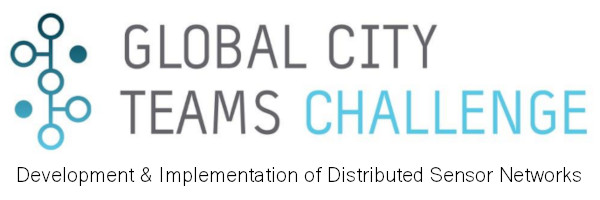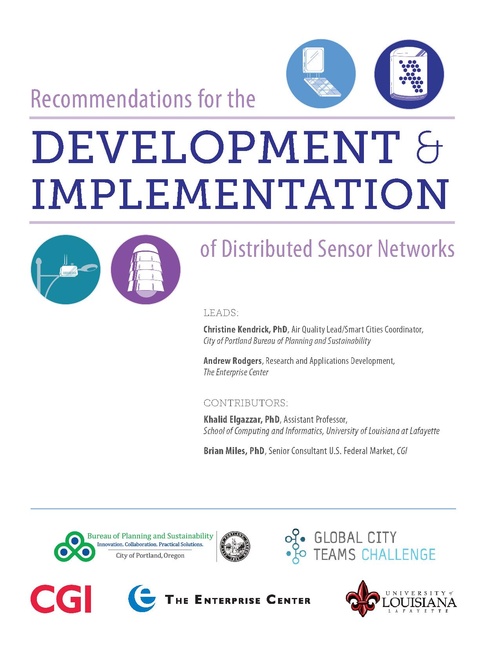Development & Implementation of Distributed Sensor Networks
| Report | |
|---|---|
| Image | 
|
| Published | 2017-01-03 |
| Point(s) of Contact | Christine Kendrick |
| Organization(s) | Global City Teams Challenge NIST |
| Where | Portland OR |

| |
In nearly every modern civic infrastructure initiative, there are compelling reasons to leverage data and analytics to deliver the most value and impact to citizens. However, few resources are available that help communities understand the critical nature of the underlying sensors and infrastructure that support these applications, especially in a cross-sector, vendor agnostic way. This document strives to provide a robust orientation for those tasked with assessing, planning or deploying these advanced sensor networks. This document is not a prescriptive, step-by-step guide to a successful deployment, as the topical scope is far too large, and community and project variability far too broad to provide a monolithic solution. Instead, we seek to challenge the reader to discover the critical aspects of their project through coordinated effort with the appropriate stakeholders, and with full appreciation for the cultural, technical and resource constraints of their community.
We’ve divided our blueprint into 12 key project stages, ranging from problem identification to hardware end of life. These project stages were identified through two facilitated workshops in Washington DC and Portland, OR as part of the National Institute of Standards and Technology (NIST) Global Cities Team Challenge (GCTC) Transportation SuperCluster. Sensors, as discussed here, could represent a variety of specific applications such as devices for traffic counts, pedestrian activity, light metering, noise, air quality, water quality, climate-related measurements, etc.
For each project stage, key considerations are discussed and summarized. These considerations include lessons learned from other projects and questions to ask yourself when designing or planning a project to address common issues and major challenges. Communities may find themselves well beyond stage one, or even that certain stages are not appropriate for their specific scope and context, and we hope that each stage offers helpful insight regardless of your starting point.
A recurring theme you will find is the absolute dependency on good communication with stakeholders, and a realistic view of the limitations in expertise and resources within that group that you should seek to augment for maximum efficacy. As the available technologies and community needs evolve, we hope that keeping this theme in mind while addressing the various considerations identified here will help support successful planning and implementation of sensor networks.